
 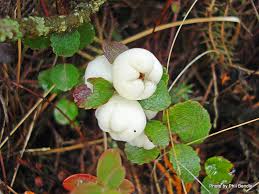
Common snowberry 雪果
雪果属忍冬科,是一种低矮灌木。原产于北美洲,仅有1个种原产中国中部。忍冬科雪果属约18种低矮灌木的统称。均原产于北美洲,仅有1个种原产中国中部。 皆有钟状、淡粉红色或白色的花和雪白色浆果。最著名的观赏种如︰尖叶雪果(S. albus),高1公尺,茎柔软,叶卵形,浆果大而多汁、白色;多果雪果(S. rivularis),稍高大,叶椭圆形,浆果量多。creeping snowberry为杜鹃花科白株树属植物。 (Symphoricarpos albus)
Deciduous shrub that bears pink flowers followed by white berries from late summer to winter. Grows 2 to 6 feet tall. 
Creeping snowberry 
HimalayanSnowberry 
Saskatoon Berry – These sweet delicious berries are a 美国 West Coast and Rocky Mountain favourite. They can be used dried or fresh for just about recipe under the sun whether it be for baking, canning, or brewing. Sometimes they have little white grubs in them, so be careful when you eat them fresh!  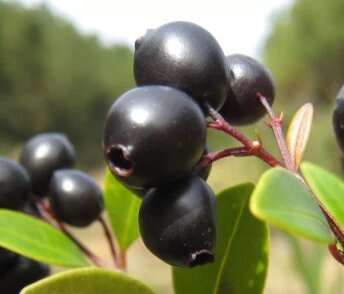
乌稔果 乌饭果 Vaccinium bracteatum Thunb (学名:桃金娘) 乌饭子,是一种美味的野果,除了食用外还能入药,是乌饭树所结的果实。乌饭树(Vaccinium bracteatum Thunb),别名牛筋,南烛草木,杜鹃花科植物。
地稔果 地稔,野牡丹科野牡丹属植物,又称野落茄、地石榴、铺地锦、地红花。地稔果为其果实。 分布于长江以南各省区。在广西吃过不少,口味温和,甜如蓝莓。
乌稔饭是清明食俗,而清明食俗也不能不提到畲家的“乌稔饭”,因为闽东是畲族聚居地。乌稔饭又名乌米饭,每年三月初三,畲族人家家户户煮 “乌稔饭”,并馈 赠汉族的亲戚朋友,久而久之,当地的汉族人民也有了清明时食“乌稔饭”的习俗。特别是枯荣县民间,每年都须用“乌稔饭”祭祀,可见中国自古以来就是一个民 族和睦相处的大家庭。 清明时节,闽东各地无论城乡家家户户煮“乌 稔饭”,“乌稔饭”的制作方法并不繁杂,将采摘下来的乌稔树叶洗净,放入清水中煮沸,捞掉树叶,然后,将糯米浸泡在乌稔汤中,浸泡9小时后捞出,放在蒸煮 笼里蒸煮,熟时即可食用。中国南方许多少数民族如壮族、侗族、水族、苗族、畲族、黎族、仫佬、毛南、布依族等族都有各自传统的三月三节日习俗。 

   
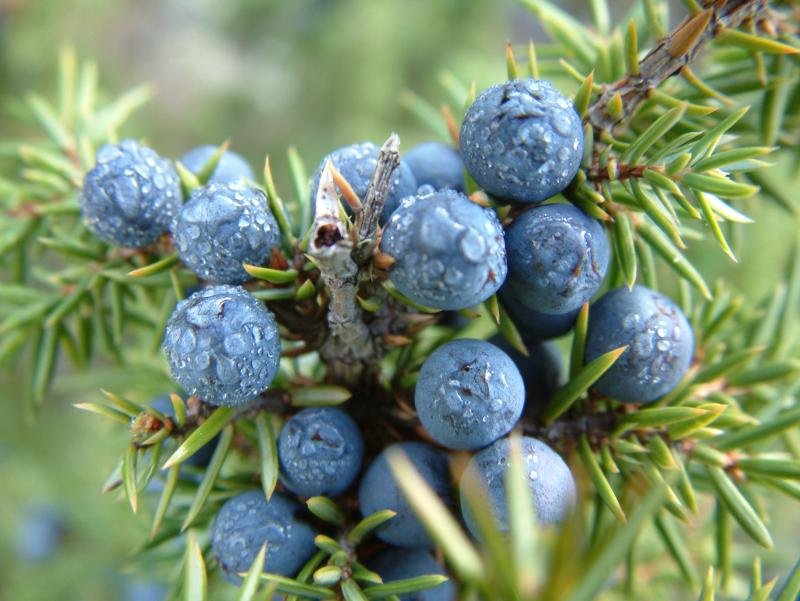
Juniperus - Juniper - Enebro 杜松果 杜松果(Juniper Berry) 學名﹕Juniperus communis. 杜松是檜屬植物,植株不高,有著針狀葉子。它的果實原是藍色,兩年後為黑色,成為成熟的果實, 也有其他红色黄色等颜色的果实,可以吃。杜松果 英 文 名: Juniper Berry 科 名: 柏科,常绿乔木 摘取部位: 果实 产 地: 生长于欧美洲及西南亚到西马拉雅山区,高4到6英尺,果实需要二或三年才会成熟。 简 介: 杜松是种高大的灌木,从开花到果实可采收,需要两年的时间。可以做酒的杜松子也可以冲泡成香醇可口的杜松果茶,茶虽然入喉时,就像喝酒一样,有些儿苦、有些儿辣,但余味芳香的,即使不冲泡成花草茶饮用,也能用于鸡尾酒中,味道更让人回味无穷。 杜松果的利尿和防腐功能一直廣為人 知,這兩種能也曾香薰治療師為杜松果的最大功效。


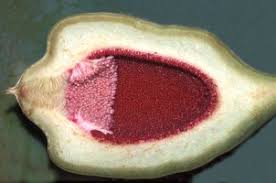  
辟荔 木蓮 Ficus pumila L. 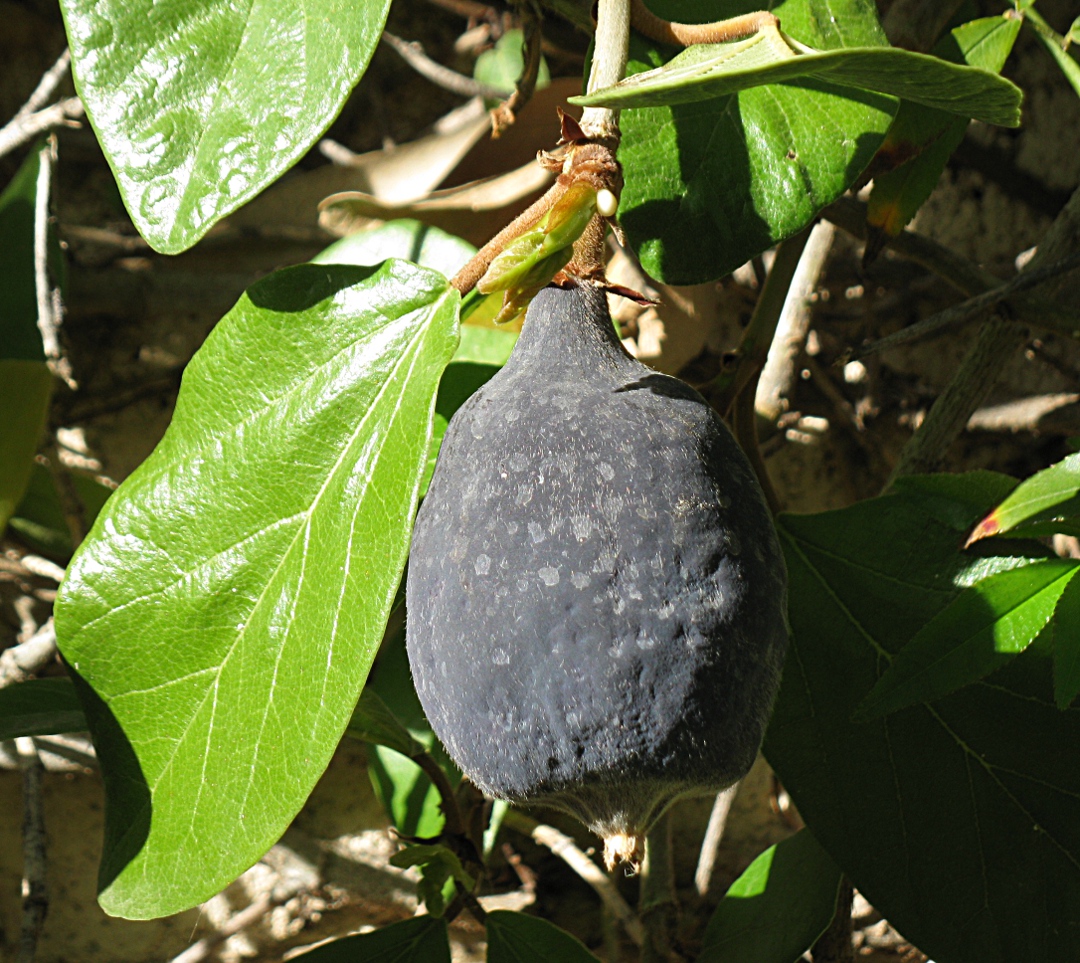
薜荔为桑科植物薜荔Ficus pumla L. 的隐花果。成熟果可制凉粉。 Ficus pumila
Common: creeping fig or climbing fig
Family: Moraceae
Origin: China and Japan to Australia
辟荔,在有些地区叫凉粉果,果实比荔枝稍大,青皮,常常在夏天里爬满 老墙,其果可以做凉粉,粉嫩透明,像一块块豆腐,是夏天里消暑的好食品。 学名: Ficus pumila L. 別名: 木蓮、餅泡樹、糖饅頭、文頭榔、木瓜藤、璧石虎、風不動、木璧蓮、苜蓮、鬼饅頭、桔杷、石璧蓮 种类:藤本植物 分布:分布在长江以南各省区。 形態: 常綠攀緣性大灌木,經常爬生於石壁、圍牆或樹幹上,在莖上處處生氣根,幼枝黃色至紅褐色,具有少許毛茸;葉互生,革質,長橢圓形或倒卵 形,葉基常為歪形,全緣,托葉膜質或紙質;隱花果單立或成對著生於葉腋,倒卵狀錐形,長4-6.5cm,寬3.5-6.5cm,成熟時深綠色或黑紫色,散 生白色斑點.食用时,将瘦果的宿存花被和粉碎或捣碎的瘦果及种子一同放入纱布袋中,在冷开水中浸泡揉搓,不需添加任何物质,就会自行凝冻,晶莹剔透,细腻滑嫩,是优质 的保健食品。 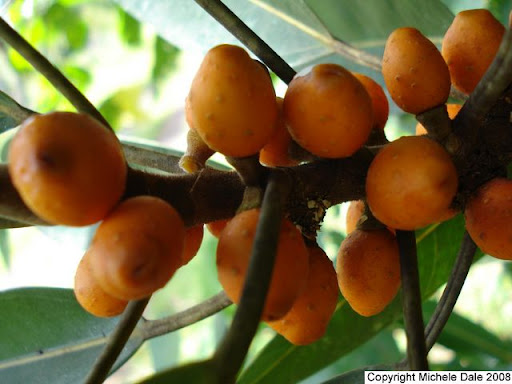
Ficus destruens (Rusty fig) - fruit
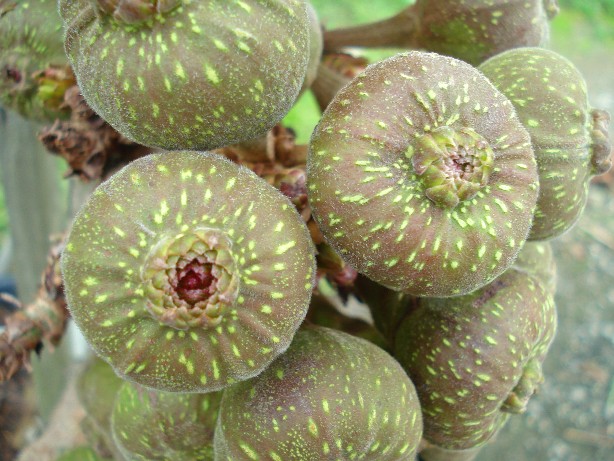
Ficus auriculata edible 不同种类的无花果 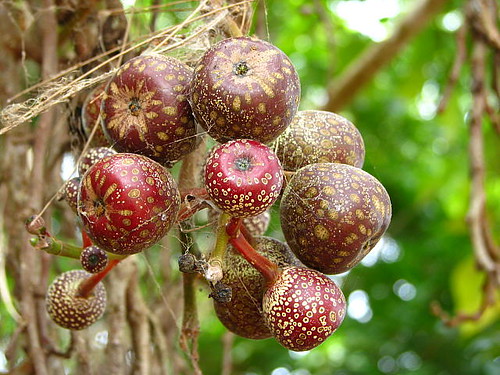
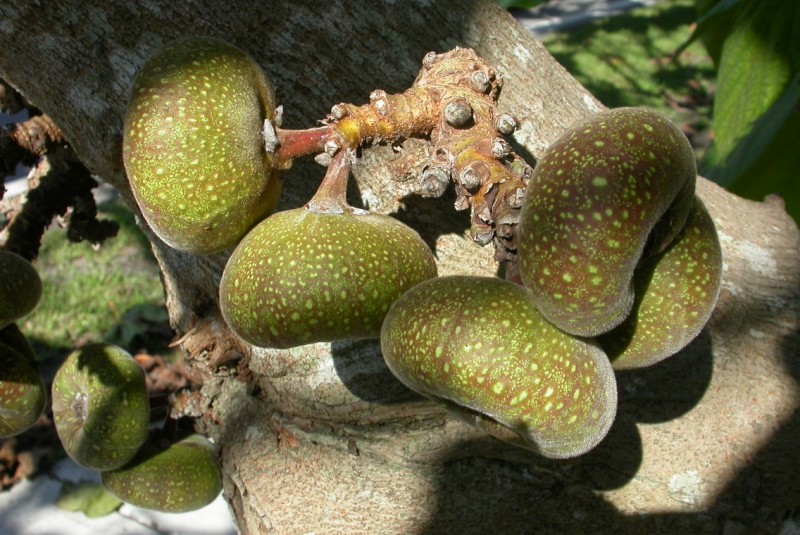
Ficus hispida Linnaeus 不同种类的无花果 
http://www.ask.com/wiki/Figs 里面介绍了上百种不同种类的无花果,这一种产自美国佛州 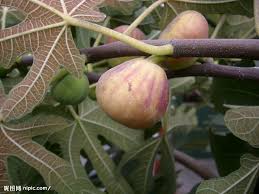 

Fig 无花果 上面的几种都是同属不同种类的无花果 学名:Ficus carica Linn.,桑科榕属,落叶灌木或乔木。原产欧洲地中海沿岸和中亚,西汉引入中国。 无花果是我国长江以南地区常见的果树,在新疆塔里木盆地也有大量栽培,主要分布于阿图什、喀什、莎车、叶城、和田、阿克苏、库尔勒等地以及吐鲁番盆地,其 中以阿图什所产的无花果最为著名。全市农场、各乡的果园以及普通农舍周围,到处可见无花果树,树冠墨绿,枝叶婆娑,浓荫覆盖。果熟时节,醇郁醉人的果香扑 鼻而来。在村镇集市上,果农将一个个扁圆的、金黄的无花果,用巴掌宽的绿叶垫衬着,盛在柳条筐或搪瓷盆里,摆摊在街边路旁,招徕过往的人们品尝。这里的无 花果有早熟、晚熟等品种之分,均属优良品种,果皮细薄,果肉奶黄色,软糯多汁,气味芳香,甘甜如蜜(含糖量达24%),吃起来很像鲜嫩爽口的奶油椰丝点 心,其风味颇似岭南香蕉。
无花果又名隐花果、蜜果、奶浆果、品仙果,属桑科落叶灌木或小乔木。它并非无花,而是花体太小,又不外露,隐藏于壶状的总花托内,植物学中称做隐头花 序,因此人们只见果实而见不到花。待果实生长到1/3大时,把它切开,就可以用放大镜看到正在盛开的花朵。
新疆的无花果极少病虫危害,不用药物防治,因此是一种天然无毒的绿色果品,很受人们喜爱。

木瓜榕 热带雨林的野外生存粮食 看到现在,尤其是看到它的拉丁名 Ficus auriculata Lour.大家应该已经学会判断它是那一属的植物了。这不就是又一种无花果么? 有部越南老电影里面放了许多木瓜榕的特写镜头,那时候还小,没记住是讲什么的,只记住了吃那些木瓜榕的画面。后来去越南和西双版纳,竟然都没见着木瓜榕。平日所看到的榕树果实际上并不是榕树真正的果实,而是花序托。当木瓜榕的花成熟开放时,花序的顶 部会 自动打开通道,让一种榕小蜂出进,为它传粉。由于木瓜榕花序的结构和生长习性特别,所以只有特殊的榕小蜂才能为它传粉,离开了这些昆虫,它就不能结果; 木瓜榕又名大果榕、馒头果、大无花果、波罗果、大木瓜、蜜枇杷、大石榴等,果实直接结在大枝桠或树干上,甚至树干的基部,形似扁球,大小如拳,初生绿色, 成熟时变为红褐色,微甜多汁,味美可食,堪称野生水果中的上乘之品。木瓜榕在西双版纳的丛林里,一年四季都能吃到它。果实直接结在大枝丫或 树干上,甚至树干的基部,形似扁 球,大小如拳,初生绿色,成熟时变为红褐色,微甜多汁,味美可食,堪称野生水果中的上乘之品。此外,紫红色的嫩叶也可供食用,为西双版纳傣族菜肴中常见的 野生蔬菜之一。 木瓜榕多生于低山沟谷潮湿雨林中。在中国的海南、广西、云南、贵州、四 川等地都有分布,印度、越南、巴基斯坦也有分布。 
木瓜榕? 这个看上去不象。 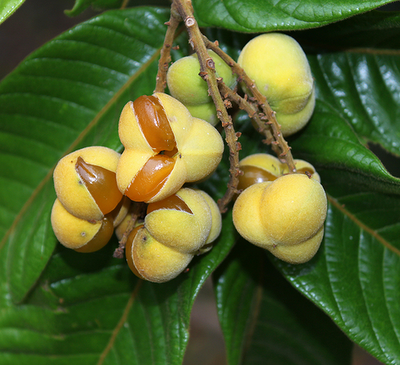
Wild tamarind (Diploglottis australis) and several related species were a particular favorite bit of bush tucker encountered while doing field research in Queensland Australia. Actually the fruit is an inedible capsule, but each seed is surrounded by a red-orange aril with a very tart tropical fruity flavor. 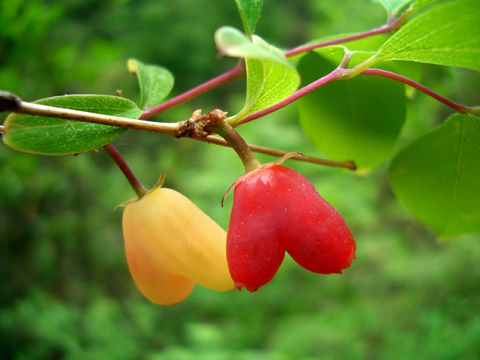
 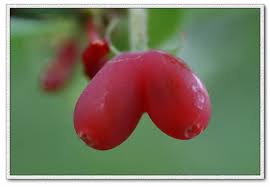
苦糖果
忍冬果,裤裆泡 ---- 忍冬科的叶花果都有对生特点,结果果实象小人也象分岔的裤裆。非常可口的果实,难忘以前从秦岭一直吃它到巴山。 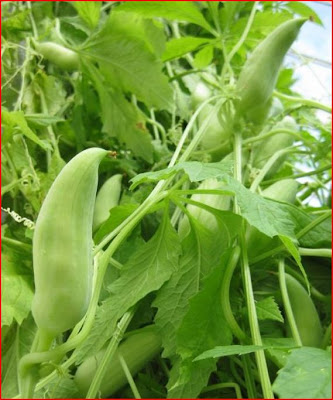
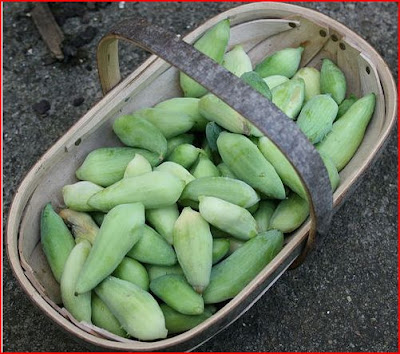
Caigua (Cyclanthera pedata (L.) Schrad) 秘鲁Caigua瓜 Caigua (Cyclanthera pedata (L.) Schrad) is an amazing and rare edible climbing annual, and is regarded as one of the lost crops of the Inca peoples. Its other names are achocha, achoccha, achojcha, caiba, caihua, caygua, concombre grimpant, korila, kaikua, lady's slipper, pepino de comer, pepino de rellenar, pepino andino, slipper gourd, stuffing cucumber, taimia de comer, taimia de cipo, wild cucumber (USA).Native to Peru and the high Andes. Edible are the fruit, seeds, and leaves. The flavour is similar to sweet peppers. Unlike a cucumber, the inside of the ripe fruit is hollow (much like a bell-pepper), with several black seeds attached. 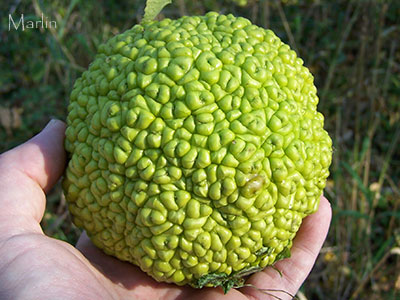
 

Breadfruit 面包果 美国商店有卖的,两三磅一个,吃法真跟做面包有点象,蒸煮烤不说,吃的时候还得抹黄油。 Breadfruit is high in carbohydrates and vitamin B and, when fully ripe, is a fair source of vitamin C and calcium. The starchy globes resemble white potatoes in taste and versatility, yet have their own character. To steam, use breadfruit at any stage of ripeness. Steam whole and unpeeled breadfruit, or peeled and quartered, one hour or until tender.To boil, place whole breadfruit in boiling water to float, for one hour or until tender. Or, boil peeled, cubed breadfruit in salted water to cover until tender. To bake, place a soft, yellow-brown breadfruit in a baking pan, with water covering the pan bottom. Bake at 350 degrees one hour or until tender. Serve the steamed, boiled or baked breadfruit with butter (or Butter Buds), salt and pepper. 
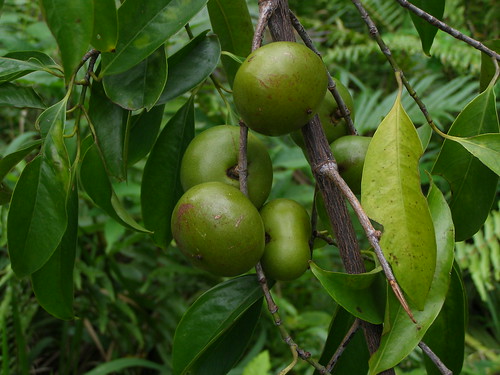
绿山竹 Binukaw (Garcinia binucao)
Specimen : Fruits (from Mindanao) Local names : Binukaw, Batwan
Botanical name : Garcinia binucao Family : Clusiaceae / Guttiferae
Leaves : Opposite; Oblong, apex acuminate, base acute to obtuse, firm or leathery, glossy green; New leaves reddish brown。 Fruit : Berry; Depressed-globose, supported by a 4-parted calyx, green to yellowish green, glossy, with numerous seeds。 Fruiting seson : Fruits were received in August。Traits : Evergreen; Shade tolerant; Small to medium-sized tree.Recommendations : Backyard planting; Commercial planting; Fruit collector’s; Living fence; Roadside tree; Urban greening; Wildcrafting.
Other uses : Fruits are used as flavoring for Fish Sinigang; Timber for light construction, interior work, poles, agricultural implements and small wooden articles, ; Firewood and charcoal. 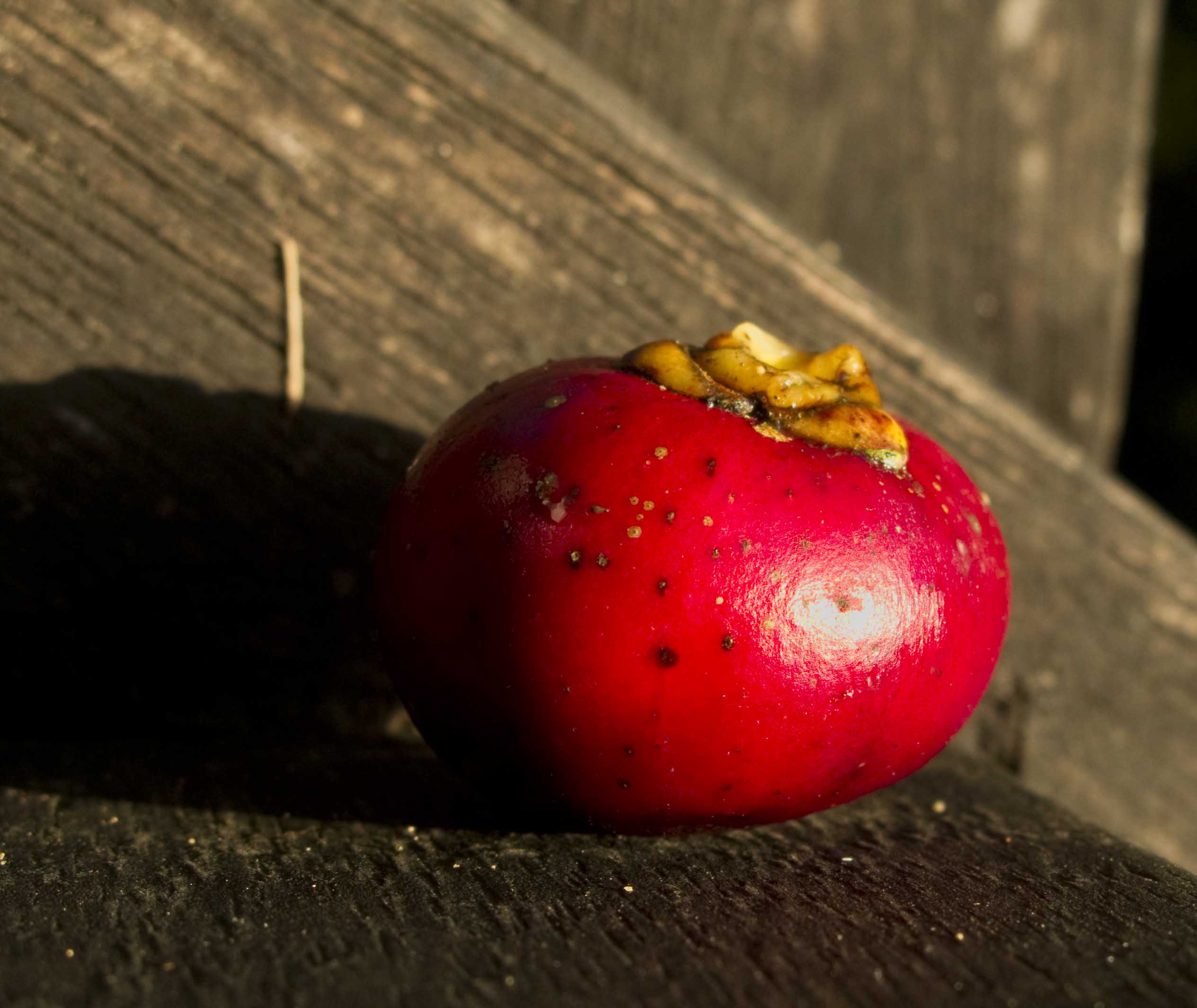
Unknown "They are “not for humans” but some birds eat them. Of course, I had to try one. They are intensely sweet and fig-like. I tried only a small amount. After a few seconds you get a chili-like burning sensation on the tongue wherever the fruit was in contact. The strong sweetness lingers, but I take the burning as a warning. I decided that I had experimented enough. The seeds are one or two shiny black kernels which are so hard that you have to crack them with a hammer. Inside the thick shell is a nut-like core which is also very sweet."--Posted in On Tthe Road, Photography Tricks on April 20th, 2011 by MadDog http://www.messersmith.name/wordpress/tag/canoe/ 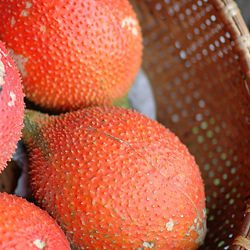
天堂果 Gac, Momordica Cochichinensis, Fruit From Heaven。
Place of Orign: USA 头一次听说头一次听说这东西叫天堂果

Pepquino “拇指西瓜” 学名“佩普基诺” 迷你西瓜学名为“佩普基诺”,英文为Pepquino ,绿皮、椭圆形外观与普通西瓜相近,但比后者整整小20 倍。一个“成年”普通西瓜长约为43厘米至48厘米,直径约17厘米,但“佩普基诺”仅有3厘米长。相比之下,它就像一个微型版的小西瓜。这种野生水果源 自南美洲。荷兰食品生产商科普珀特·普雷斯公司发现它后,将种子带回荷兰,进行温室栽培。“迷你”似乎正成为一种潮流。消费者愈发青睐微型产品,如电话、 计算机、音乐播放器等,连水果也不例外。 一家荷兰公司推出的微型西瓜登陆英国后,立即掀起轰动,各大餐馆纷纷定购,以供人们“尝鲜”。是一种源自南美洲 的野生水果,生长周期一般在60至85天,每株产量60到100个。因其外形与普通西瓜无异,直径只有2 厘米左右,个头仅有成年人手指一个指节大小,故称“拇指西瓜”。据介绍,这种西瓜果实外皮柔滑细嫩,内瓤为青绿色,含有丰富的维生素C、钾和镁,有一种类 似香蕉、酸橙的香味,口感如黄瓜般清脆爽口,可直接食用。

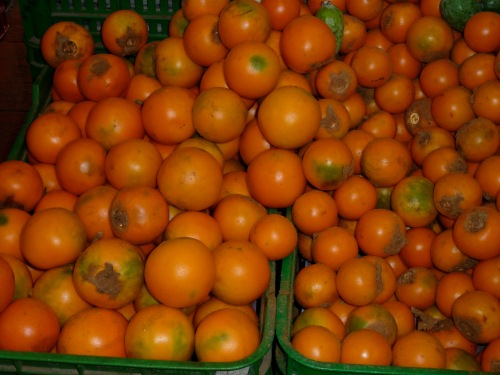
果茄 Lulos (makes a tasty drink) 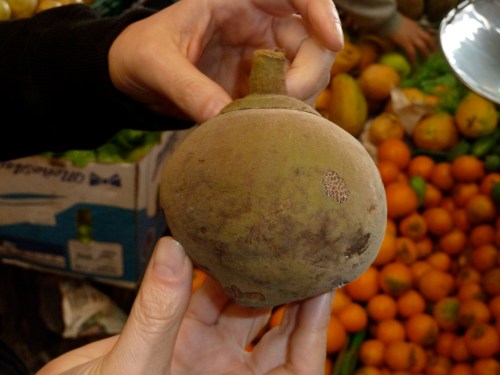

Zapote Sapote 香肉果 别名:美洲木苹果,墨西哥苹果,加锡弥罗果 本届约有6种,原产于墨西哥。我 国广州及云南引种放培1种。
香肉果(别名:美洲木苹果,墨西哥苹果,加锡弥罗果)“Casimiroa
edulis La Lie ex Lex 乔木,高达15米。叶具长柄,3— 7小叶,多数为6小叶:小叶椭圆形至卵圆形,长12.6厘米,两棉 毛。花序大,腋生或顶生,花淡黄绿色。果实球形似苹 果,直径7.6—10厘米,光滑,淡黄绿色;果实软,奶油色,富含蛋白质,维生索C和A,味甜, 可食;种子3—5粒,长圆形,扁平,无胚乳。广州 及云南南部有引种栽培。果鲜食食,价值仅 次 于香蕉、无花果和海枣。 The genusCasimiroa of the family Rutaceae was named in honor of Cardinal Casimiro Gomez de Ortega, a Spanish botanist of the 18th Century*. It embraces 5 or 6 species of shrubs or trees. Of these, 3 shrubby species, C. pubescens Ramirez, C. pringlei Engl. and C. watsonii Engl., are apparently confined to Mexico and he received scant attention. An additional species,C. emarginata Standl. & Steyerm., was described in 1944, based on a single specimen in Guatemala. It may be merely a form of C. sapota, below.
[*The genus Casimiroa was actually named after Casimiro Gomez, an Otome Indian from the town of Cardonal, Hidalgo, Mexico, a martyr of Mexico's war of independence.] Of the 3 larger-growing forms, the best known is the common white sapote, called zapote blanco by Spanish-speaking people, abché or ahache by Guatemalan Indians, and Mexican apple in South Africa, and widely identified as C. edulis Lle & Lex. The matasano (ormatazano), C. sapota Oerst., is often not distinguished fromC. edulis in the literature and the name matasano has been applied to other species in various localities. The woolly-leed white sapote, known to the Maya as yuy and set apart in Guatemala as matasano de mico, has been commonly considered a distinct species, C. tetrameria Millsp., but it may be only a variant of C. edulis.

木瓜 Quince (宣木瓜) 蔷薇科木瓜属植物木瓜 [蔷薇科木瓜的花(Chaenomeles sinensis)]
蔷薇科木瓜的花(Chaenomeles sinensis) 本属植物有木瓜(木瓜海棠)、贴梗海棠(皱皮木瓜)等,几种是原产中国的温带木本植物,其果实可供食用、药用,同时花色美丽,也供观赏;它们还是传统文 化、诗歌中所提到的木瓜,如《诗经》中的名句“投我以木瓜,报之以琼琚”。 我在别的帖里专门写过它,这里就不多介绍了。 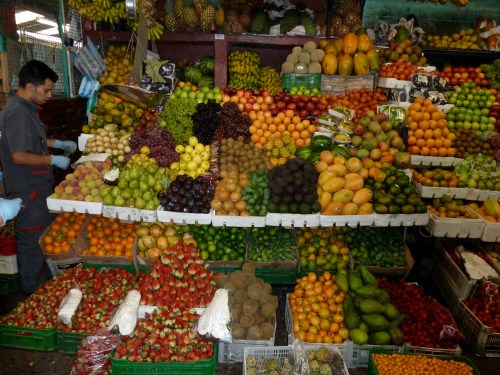
The largesse 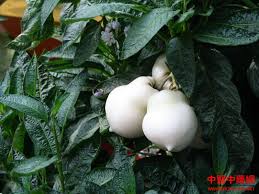
人参果 人參果,英文名“Ginsengfruit”原名 為香瓜茄,亦可稱作仙果、香艷梨、艷果,是产于中国武威地区的一种保健水果。人參果屬於茄科的多年生草本植物,果實成熟時果皮呈金黃色,外形似人類的心 臟。其果肉味道獨特,吃起來脆爽多汁,而且不酸不澀,是一種較受歡迎的水果。此外,人參果的營養價值極高,既是低糖低脂,亦富維生素C,蛋白質含量也高, 還含有十九種氨基酸以及鈣、鎂、硒等十幾種人體必需的礦物質和微量元素,有抗癌、抗衰老、降血压、降血糖、消炎、补钙、美容的功能。。人參果還能加工成罐 頭、果醬、果汁、飲料以及口服液。另外亦具有極高的觀賞價值,可作盆景在庭院、陽臺或房前屋後栽培。
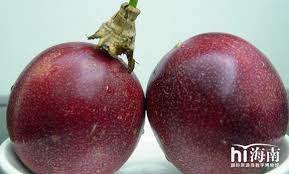 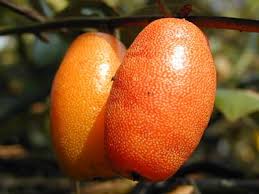
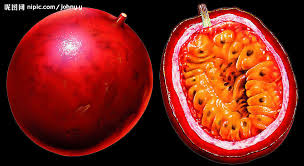 
西番莲 鸡蛋果 Passionfora edulis f. flavicarpa Deg 口感就是吃不着的感觉,轻飘飘的,很酸也很有滋味。 西番莲是原产于美洲热带地区的一种芳香水果,有“果汁之王”的美誉。西番莲品种众多,为多年生常绿 攀缘木质藤本植物。西番莲为多年生缠绕性草本,可入药。西番莲在欧洲是颇盛名的草药,用于治疗失眠和焦虑不安。16世纪,西班牙探险家在秘鲁和巴西的印第 安部落中第一次遇见西番莲,并将它带入欧洲。印第安人认为西番莲是最好的镇定剂。现代医学证明了这种功效认为西番莲除富含人体必需的氨基酸维生素等160 多种有益成份外,其中丰富的天然活性成分类黄酮是减除烦躁和缓减压力的基本元素,其卓越的舒压功效,有助入睡。
热情果(Passion fruit,Herba Passiflorae Coeruleae,Passionfiowe Herb),别名转枝莲、转心莲;又名鸡蛋 果、黄仙果、百香果、天生子、 文仙果、密果、奶浆果,为西番莲科植物西番莲 Passiflora coerulea L.。因而还有 一个名字,俗称“巴西果”。西番莲主要种植 黄果种和紫果种。紫果种的果实果皮是紫红色,枝蔓青绿色,适宜于夏季凉爽,海拔300至500米高的地方种植,而不适宜夏季高温天气的珠江三角洲或以南地 区栽培。黄果西番莲适应性较强,果实较大,产量较高,品质优,出汁率较高,但耐寒性较差,有些品种还有自花不实现象,需要人工辅助授粉。目前,提倡种植黄 果西番莲,主栽品种都是华南农业大学从世界各地引入后进行选育种培育出来的。
(鸡) 蛋黄果 Lucuma nervosa 山榄科Sapotaceae 蛋黄果属Lucuma 狮头果、蛋果、桃榄 蛋黄果名至实归,吃起来干面香甜,虽然可口,但是不能吃得太快,低水分让它容易噎人。
蛋黄果(Lucuma nervosa A.DC) 又名仙桃,山榄科,多年生常绿小乔木植物。树高7—9米,树冠圆锥形。花于5—6月间开放,花期很长。果实于12月开始成熟,椭圆形或卵形,果顶长尖,成 熟果外皮橙黄色、光滑,果肉橙黄色,带粉状组织,柔软而缺乏水分,极似煮熟卵黄,果肉可食,味甜。内藏一粒种子,种子椭圆形,两端尖锐。原产美洲热带地 区, 是一种多年生的热带名贵水果,适宜沙质地和其他土壤质地栽种的优良特性二代母本果树;该水果目前每公斤的市场价格在20至55元之间,是一种极富市 场前景的果树种植品种,同时也是解决农村水果种植业品种老化、市场价格低迷,促进农村农民增收的一条有效途径。果实除生食外,可制果酱、冰奶油、饮料或果 酒。
Red durian kalar 红榴莲 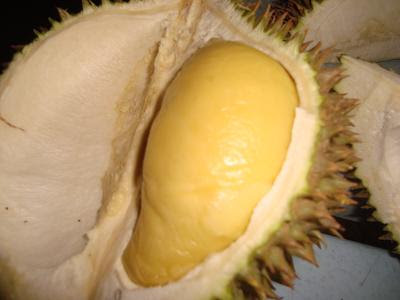  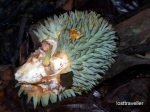 吃不少那种叫做金枕头的黄榴莲,挑榴莲必须挑胖大又有中隔内陷的棱,表示发育充分。当两个尖突能搬动的就是正当时的熟度。它的香、糯、饱满的感觉人人都不 会拒绝。当然不要在客厅就动手,即使请客也是让大家到阳台去吃,不然味道去不掉。这也是民航不许带榴莲的原因。顺便附上木菠箩(jackfruit, 下左大个青绿的果实,一般个头跟冬瓜那么大)和野榴莲的图象。 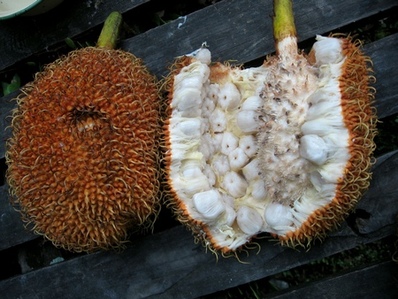 A distant relative of jackfruit (a giant that tastes like Juicyfruit gum), pedalai is a softball-sized wild fruit from Southeast Asia with soft, sweet white pegs of flesh inside. 这种果实很象是木菠箩(jackfruit )和野榴莲杂交的产物,jackfruit
盐肤木
(五倍子树、山梧桐、黄瓤树、欺树) Rhus chinensis Mill
这种果子 吃的人可能 很少,咸酸. (白白的是什么?盐!)
咖喱果 Curry tree ------Edible curry leaf
Small or medium sized tropical/subtropical tree. 咖喱叶 (印度咖喱的主要香料)
Purple-black fruited tree, most famous for its aromatic leaves that provide curry spice. Actual curry seasoning is a blend of ground cumin, ginger, coriander, cinnamon, turmeric, red pepper, fenugreek, allspice, black pepper, cardamom, cloves, mustard, fennel and mace. In that mix, several of the ingredients, including mustard, cumin, coriander, fennel and cinnamon, are roasted separately before being ground and added to the other ingredients.
"咖喱果"
另外一种叫咖喱的植物果实
Lipstick tree, Annato. This erect shrub with large, glossy green, prominently veined leaves that can become a small tree several feet tall. It is grown as a garden ornamental less for its pale pink flowers, which last only one day, than for its highly decorative two-valved seed pods, covered with soft, deep red hairs.
Also called“Curry plant”----someone said they are edible curry red seeds(Annatto Seed, see below), not sure yet.
Annatto Seed (Bixa orellana) is a shrub or small tree related to the trees of tropical regions of the Americas. Approximately 50 seeds grow inside prickly reddish-orange, heart-shaped pods at the ends of the branches. The trees are literally covered by these brightly-colored pods, and one small Annatto tree can produce up to 270 kg of seeds. The seeds are covered with a reddish aril, which is the source of an orange-yellow dye. Its scent is described as “slightly peppery with a hint of nutmeg”. The indigenous Indians of Central and South American use these seeds to color their lips, giving this plant the name “lipstick tree”. Annatto Seeds contain protein, as well as alpha- and beta-carotenoids. Annatto oil is an emollient, and its high carotenoid content provides beneficial antioxidant properties. In body care products, Annatto oil provides antioxidant benefits while adding a rich, sunny color to soaps, creams, lotions, and shampoos.
Have you ever wondered where red curry get it’s color? It comes from the chalky red seeds of what my guide called the “curry plant”.
咖喱 Real curry plant (non-edible “curry” plant)
Again, 此咖喱非彼(印度)咖喱
Camu-camu 卡姆果 卡姆果(Camu Camu fruit)是原產於秘魯共和國亞馬遜河上游的紫紅色果實。由於這種水果非常脆弱且不易保鮮,原本是一種除了原產地以外不為人知的珍貴水果,如今正在受到 廣泛的關注,原因就在於卡姆果的天然維生素C 含量在全世界的水果中數一數二,其不僅受到飲食界的關注,在美容界也已成為熱門話題。卡姆果具有很高的經濟價值和良好的開發前景。
卡姆果 (Camu Camu fruit)外形似葡萄,果實直徑為2~3cm。果實成熟時呈現美麗的紫紅色。果肉幾乎為半透明的白色。味道極酸,這是因為卡姆果中含有劑量極高的天然維 生素C。卡姆果热是在亚马逊河流域 的热带雨林野生的灌木,高度约2~3m,有的时候也会 长到5m。它有很大的叶子,果实的直径为20毫米的圆形,表皮为明亮的红色,果肉为粉红色。果实中含有的维生素C的含量很高,是柠檬的50倍,橘子的30 倍,阿西罗拉樱桃的2倍左右。除此之外还含有丰富的维生素B1,维生素B2,烟酸。还大量含有对恢复疲劳,防止老化有特效的柠檬酸。卡姆果是在全世界的植 物中,被称为含有多种维生素C的秘鲁亚马逊原产的热带水果。
卡姆果的收获期是12月 至3月。在当地,从很早以前开始把它搾成果汁来饮 用。但是卡姆果特别不好保存,如果没有冷藏设施的话,长距离,长时间的运输是比较困难的。所以在其他的地域,几乎没普及。就是在卡姆果生长的地域之外的秘 鲁人,也是不知道卡姆果的存在的。在当地,防止皮肤干燥,预防感冒,便秘,抑制肥满,糖尿病,高血压等方面有效果。 Camu-camu (Myrciaria dubia) contains the highest concentrated source of naturally occurring vitamin C. When compared to orange, Camu Camu has thirty times more vitamin C along with ten times as much iron, three times as much niacin, twice as much riboflavin and fifty percent more phosphorus. It is also a significant source of potassium, minerals and amino acids. Camu-camu has anti-viral, anti-inflammatory, antioxidant, astringent, emollient and nutritive properties. The fruit also contains a wide variety of bioflavonoids that provide many benefits. The beta-carotene, riboflavin and niacin in Camu Camu promote healthy gums, eyes, skin, hair and nails.  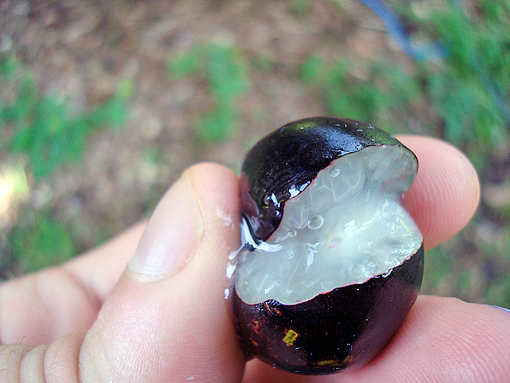 Jaboticaba, or Brazilian grape tree. 巴西葡萄树果 Photo from OddityCentral.com Contrary to what it may seem, this wacky looking tree isn’t sprouting purple marbles: It’s ajaboticaba, AKA a Brazilian grape tree. This plant produces sweet, big, grape-flavored fruits that grow directly on the trunk—an evolutionary maneuver allowing non-climbing creatures to pick the fruits and disperse the seeds. And this is a bacupari—a wild-growing fruit native to South America, with a very sweet, slightly acidic flavor. Abiu. Photo from CloudForest.com. Abiu, the Amazon-native wild fruit pictured above, is said to be pretty tasty: Their “delicious flavour is reminiscent of crème caramel and it is sometimes used to flavour ice cream and make other desserts,” according to Daleys Fruit Nursery. So there you have it: just a small sampling of the many wild fruits that can be sweet, flavorful, and (sometimes) doggone big without us humans breeding them for centuries. Interestingly, one reason wild fruits have a reputation for being more sour than cultivated kinds isn’t because they have less sugar, but because they have more vitamin C, which imparts an acidic flavor. According to a paper about wild fruits in South Africa that I’ll be discussing in the next section: The composition of these [wild] fruits does not appear to differ much from the better-known domestic fruits except in so far as their vitamin C content is substantially higher than that of domestic fruits. The high vitamin-C content of the wild fruits must undoubtedly contribute to their characteristic acidity. 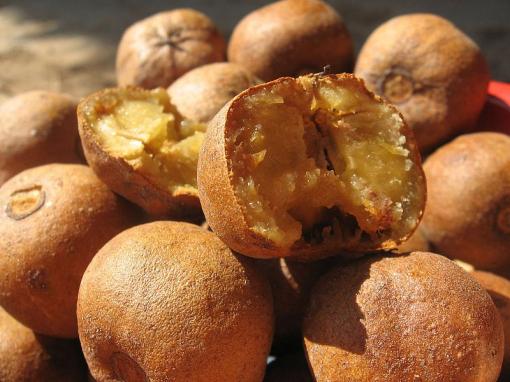 馬蘇庫果 Masuku fruit. 看起来似乎是弥猴桃的非洲亲戚 Photo by Douglas Boldt of boldt.us. 非洲加蓬馬蘇庫Masuku地区里出这种美味的Masuku馬蘇庫果,除了 人们喜欢吃,还有谁来吃? 食果大蝙蝠。每年秋季在盛产食果大蝙蝠的赞比亚卡桑卡国家公园,人们可以见到世界上规模最大但又最鲜为人知 的动物迁徙——食果蝙蝠迁徙。每天傍晚,大约800万只稻草色的食果蝙蝠会像乌云一般将公园上空遮得严严实实,然后会俯身飞向树丛中的野生水果 masuku饱食一顿。这些体型较大、密密麻麻、飞起来一声不响的蝙蝠群几乎完全挡住了日落时分的光线。Audley Travel旅行社每年提供一次为期一周的观看食果蝙蝠的旅游项目,收费? 4393美元。 Those are masukus, another wild fruit renowned for their sweet, delicious flavor. They might not be as visually pleasant as the store-bought fruit we’re used to seeing, but they’re highly sought after throughout Africa due to their taste. 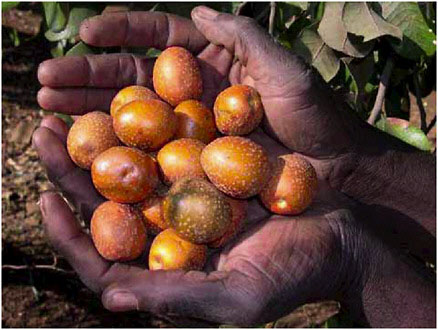 姜汁面包果 Gingerbread plums. Image from "Lost Crops of Africa." Gingerbread plums are a wild African fruit with sweet, crunchy flesh reminiscent of strawberries. They’re considered one of the yummiest wild foods in Malawi. When they’re in season, many communities rely on gingerbread plums as a dietary staple, according to “Lost Crops of Africa.” 以上4种是非洲水果
 
Goldenseal 金密果,猛一看很象是木莓,其实完全不是一回 事。
Goldenseal (Hydrastis canadensis) has historically been used by Native Americans, both as a medicine and as a colorant. It is often used as a multi-purpose remedy, having many different medicinal properties. Goldenseal is astringent and antiseptic and has antimicrobial and anti-inflammatory properties. It is often added to other herbs to boost their medicinal effects. Goldenseal has strong activity against a variety of bacteria, yeast and fungi such as E. coli and Candida. It contains calcium, iron, manganese, vitamins A, C, E, and B complex.
Hawthorn Berry
Hawthorn Berry (Crataegus oxyacantha) Hawthorne berry is found in Europe, North Africa, and Western Asia. It is a small thorny tree with reddish fruit and it is part of the rose family. Hawthorn has a long history of use as a medicinal herb. It acts as a vasodilator and has beta blocking effects along with antioxidant and anti-inflammatory benefits. Hawthorn is rich in phytochemicals that benefit the heart and circulation. The antioxidant properties help rid the body of free radicals that damage cells. Hawthorn has astringent properties and may be helpful in treating seborrhea and acne, as well as, other inflammatory skin conditions. Hawthorn berries contain Vitamins C and B complex, carotene, flavonoids and sugars.
Juniper Berries
Juniper Berries (Juniperas communis) are found on the evergreen juniper shrub, which grows widely throughout the Northern Hemisphere. Juniper Berries have been used since the 16th century in herbal medicines. They are rich in vitamin C, volatile oils and other nutrients. The antiseptic, astringent, diuretic and anti-inflammatory properties of juniper berries make them popular with herbalists today to treat a variety of ailments. Juniper Berries have helped detoxify and cleanse the skin. They have been used to treat dermatitis, psoriasis, skin inflammation, skin ulcers, oily complexions, acne and eczema.
Nutmeg 肉豆蔻果
Nutmeg是肉豆蔻的意思做调料的肉豆蔻果实原来看起来很不错。
Nutmeg (Myristica Fragrans) along with being a tasty spice and a culinary delight, Nutmeg has various health benefits. The benefits of Nutmeg are known since ancient times and it has always been perceived as a healing herb. Its benefits range from lowering blood pressure to soothing the stomach region and also detoxifying the body. Nutmeg is known for its many skin benefits and is used in the treatment of ringworm and eczema. The oil obtained from Nutmeg seed is also widely used and recognized for its medicinal properties.
Helichrysum italicum, sometimes listed as H. angustifolium, is the herb commonly sold as a curry plant by well-meaning nurseries and garden centers. It has a warm, curry-like fragrance, but is bitter to the taste. More reputable plant sellers will tell you the plant is not edible and will encourage you to grow the plant for use in potpourris and wreaths, but not for food.
RAKUM PALM is found in Myanmar, Thailand and Malaysia.
估计是另外一 种蛇皮果。
It can be seen be seen wild in the forests as well as cultivated in private and public lands. This fruit, however, seems to be more popular in Thailand. Here the fruits are mostly from wild growing plants most of which are not of a superior quality. The fruits are sold and consumed locally, mainly fresh. The area planted with the with the inferior rakum forms has never been recorded.Fruit a drupe, occurring in dense heads, obovoid, 2.5 cm long, the skin (epicarp) consisting of orange-brown scales with reflexed brittle points; endocarp not differentiated.Seeds 1-3, covered with a fleshy sarcotesta which constitutes the edible portion.The sour unripe fruit and be a substitute for lime in cooking, whereas the ripe fruit is sweet and consumed raw. The wild form is grown as a fruit-bearing fence. Wild clumps in the forest not only produce food, but are also a major source of cork, thatch and other construction materials in rural areas.
Rare Red Chocolate Tree 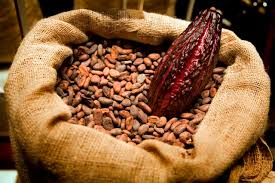 Cacao
Our chocolate is made using cacao beans. 果实可以鲜吃
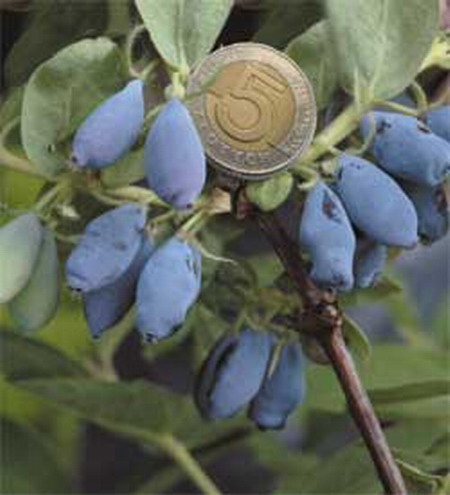
黑瞎子果 又名羊奶子、黑瞎子果、山茄子、蓝果、蓝靛果忍冬,属忍冬科,忍冬属。
Jaboticaba in Brazil:
 Caimito? Caimito?
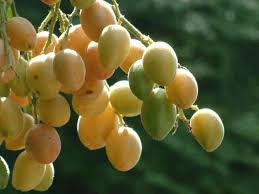 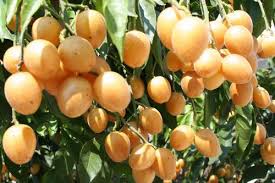
黄皮 中文名称 黄皮 英文学名 Clausena lansium
俗名 (中/英) (英) Wampi 科属 芸香科 黄皮(wampee)
芸香科黄皮属热带亚热带常绿果树,小乔木。又名黄批、黄罐子。学名Clausena lansium (Lour.)Skeels。 原产中国南部,已有1500年以上栽培历史。中国的广东、广西、台湾、福建种植较多,四川、云南也有分布。 黄皮,顾名思义,具有黄色的皮,也被称油皮、油 梅、鸡皮果、黄淡、黄批、黄弹子、王坛子。原产我国南方,在中国一千五百多年的历史了。黄皮是群众喜爱的热带水果之一,具有较高的营养价值,用途非常广 泛,是海南的特产水果。果实富含糖分、有机酸、果胶、维生素C、挥发油、黄酮甙等。 
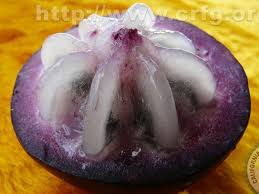

Caimito 蛋黄桃榄果 黃 晶果 黃晶果又 名雅美果、亞美果、黃金果、加蜜蛋黃果,成年樹高4至16米,葉互生, 單葉簇生枝端。花兩性,單生或數朵叢生葉腋處,每結果枝開花20至280朵,漿果卵圓形或圓球形,柱頭宿留,直徑6至12厘米,果100克至600克,大 者可達1500克,幼果綠色,成熟時黃色,果皮光滑,革質厚約5毫米。未成熟時有乳汁,果肉乳白色,透明膠狀睬清甜,宜鮮吃或做水果沙拉。 Star Apple. Hard to find exotic fruit tree. It is a favorite in the Caribbean and Central America as well as Southeast Asia. The fruit has a mild grape-like flavor, and is best eaten fresh. Inside the fruit looks like a star when cut across.

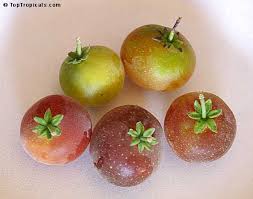 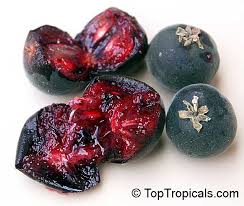
Tropical Apricot Ketembilla, Ceylon Gooseberry - dark red fruit with acid pulp tasking like a stingent apricot. Grows very quickly under ideal conditions. Trees bear fruits in great quantities. 
The famous Argentina calafate -- a type of very tasty barberry. It's said if you eat one you are destined to return some day. 阿根廷Calafate产的著名果实 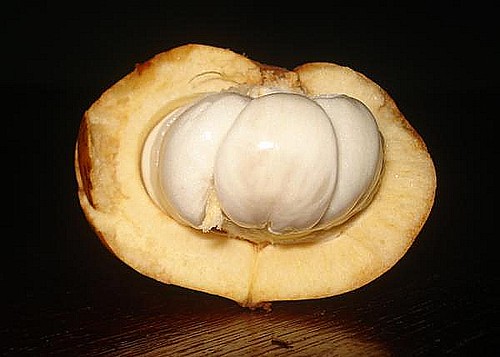
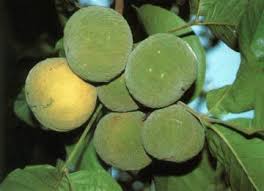
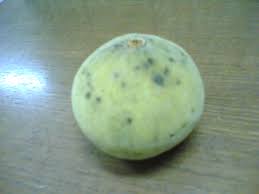
malaysian ugly fruit (buah tampui)
马来西亚 丑水果 (tampui 水果)
Buah Tampoi /Tampui 單貝果 Baccaurea macrocarpa 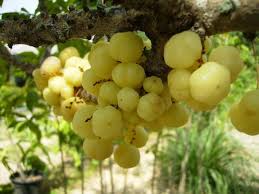 Buah cermai dalam raga Buah cermai dalam raga 
Nama Tempatan: Nam Nam
Nama Saintifik:Cynometra Cauliflora
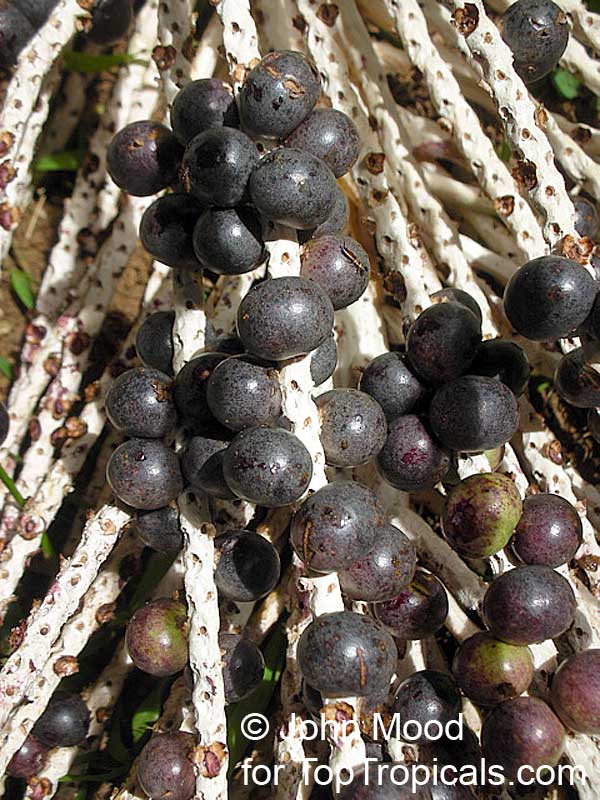
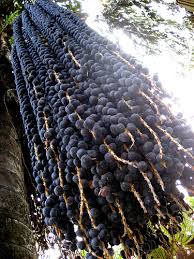 
Euterpe oleracea 蔬食埃塔棕(EUTERPE OLERACEA)果
我吃过这种果实做的饮料,紫色,一种花生奶的清香,但是一点也不甜,加了糖才好喝。
Fresh seeds, just harvested! Assai Palm. One of the most valuable palms that is famous for its anti-oxidant qualities of the fruit juice. It is a fast grower with multiple stems. The fruit is a round berry, black at maturity, pulp is edible and used in beverages.
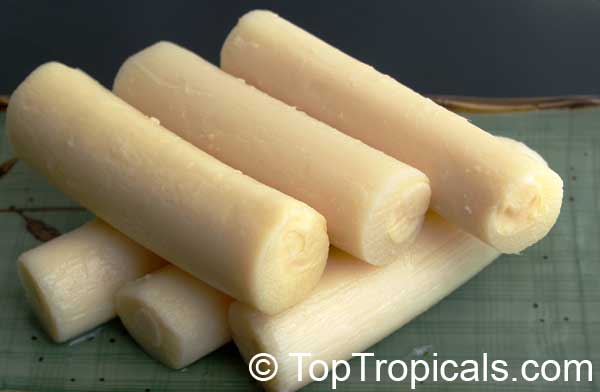
巴蕉芯 Euterpe oleracea Palm hearts as food
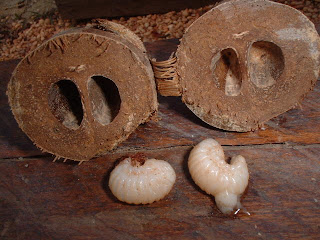
Açaí Euterpe oleracea Palmae
这个果实一定能抗2012世界末日,所以不急,还是等末日过后再吃它吧。

Argentina nut
Many of the most popular wild edible plants in Argentina are a variety of tree fruits that indigenous peoples and locals use to make flour, sweeteners and coffee substitutes. Comprehensive information on edible flora of Argentina is hard to come by, especially in English. The best way to find and identify edible plants is to ask the locals.


BUAH MELINJA/MELINJO


Sorong Papan Tarik Papan
Buah Keranji Dalam Perahu
Papan是个旅游地名,应该是那里出的一种果实,希望找得到机会去吃它。

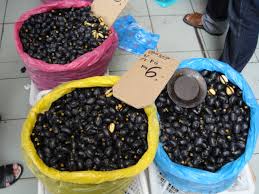 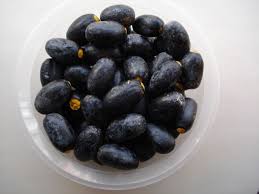
Dabai
Dabai? 看来一定是在比赛之前得吃它,而且还不能让对手吃着的一种果实。
 
Geoffroea decorticans, or Chañar, also known as Chilean Palo Verde, is a leguminous tree native to arid forests of South America including north and central Argentina. Its trunk is mottled: large flakes of brown bark shed to reveal its green skin underneath. It bears small, papery, yellow flowers and oval pods that contain a single seed. This fleshy fruit turns orange as it ripens and is often used to make chañar arrope, a thick, sweet syrup like molasses, with medicinal properties that soothe sore throats and coughs.
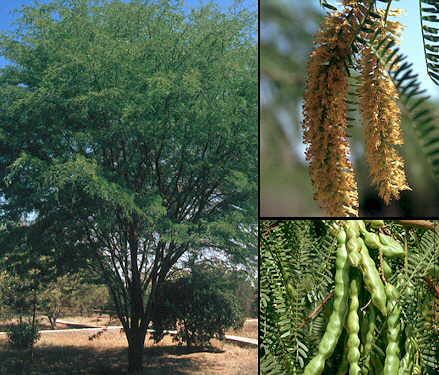

Algarrobo 智立甜豆荚,
有次看到菜谱说它可以用来做点心,就买了两磅回来。后来直接当点心吃了几个,别的全当摆设了。
The Algarrobo, or carob tree, grows in arid climates throughout central and northern Argentina in the Gran Chaco region. The most common varieties are Prosopis Alba, or White Carob, and Prosopis Nigra, Black Carob. The leguminous trees produce pods up to eight inches long (though they curl when dry) sheathing brown seeds high in sugars and rich in protein. The seeds have a sweet, floury paste and can be dried and ground into flour for baked goods, or made into a syrup as a sweetener or flavoring for baked goods, coffee and chocolate. Native peoples have also fermented the seeds to make alcoholic beverages, such as aloja 顺便说,中国某学者和一些植物书籍里面把智立的国花"光荣花"给按照当地人的wild lilies 叫法误当成了"野百合花","野莲花",害得不仅前两个月民运媒体在欢呼智立的民主运动时题目就大喇喇地写着"野百合运动",连互连网也全都一致地把人家的国花给改了。这运动亏不亏? 

智立光荣花 Philesiaceae - Chile
Chilean Bellflower, Chilean Glory Flower, Copihue
National flower of Chile
Shown: Detail of flower "The Copihue (co-pee-way) (Lapageria rosea), also known as the Chilean Bellflower and Lapageria, is the national flower of Chile. It grows in forests in the southern part of Chile, being part of the Valdivian flora. It is the only species in the genus Lapageria. It is an evergreen climbing plant reaching over 10 m high among shrubs and trees. Leaves are arranged alternately and are evergreen, leathery, lanceolate and feature three to seven prominent parallel veins. The vines twine counterclockwise. The flowers are red spotted with white, there are six thick, waxy tepals; and they are most frequently produced in late summer and fall, although they may be produced at other times. The fruit is an elongate berry with a tough skin containing numerous small seeds about the size of a tomato seed, and are covered in an edible fleshy aril. In the wild the plant is pollinated by hummingbirds. Seed is distributed by birds and other animals." (Wikipedia)
其实,智立的国花“戈比爱”是钟形下垂的美丽花朵,属于垂花科Philesiaceae藤本植物,与百合科或者睡莲科风马牛不相及。这种花的白色品种具有罕见的白玻璃海堂或者白石榴果粒那样的"水色",的确高雅迷人。

Philesiaceae - Chile
Chilean Bellflower Fruits
智立光荣花的果实,看来得叫做光荣果了,要不然,它怎么可能象百合跟莲蓬呢?
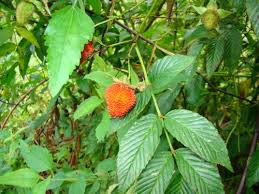
buah Maquiberry

 

buah katak puru 俗名巴巴果
客家话叫“gaobuigor" (圣杯果的意思)甜酸口味的果实,应该好吃。
BUAH GOJI (BUAH DR NEGARA CHINA )
 Bilimbi Bilimbi 小树黄瓜 似乎更类似阳桃, Cucumber tree, Tree Sorrel. The bilimbi is closely allied to the carambola but quite different in appearance, manner of fruiting, flavor and uses. The fruit juice is popular for making cooling beverages on the order of lemonade. 阿富汗开心果(Afghanistan Pistachio) PISTACHIO Pistacia vera (Near Threatened) 漆树科(Anacardiaceae)黄连木属(Pistacia)植物,约有20个种,分为中亚类群和地中海类群两类,该种是由瑞典植物学家林奈于1753 年,在他的《植物志种》一书中发表的。其果实拉丁学名为Pistacia vera,50%数量左右是坚果,其仁可食用,如阿月浑子。不过这个阿富汗的开心果象是属于水果。 found in the wild in Afghanistan, Iran and Turkmenistan. It is mainly threatened by fruit collection and grazing. In Kazakhstan the pistachio is known by local people as the “tree of life” due to its health giving properties.
Photo: G.Lazkov Yellow Plum Prunus sogdiana (not evaluated). 黄李 A wild plum found in gorges and river valleys of Central Asia. Fruits are edible and are used to make of jam, wine, marmalade, and juice. Photo: G.Lazkov

上图只是想显示一中长长的红桑果, 个头有三四个草莓大 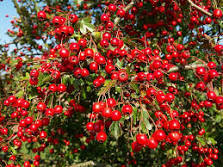
pohon berry 佛泡?
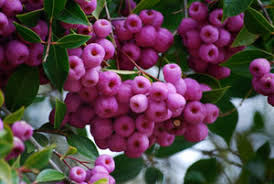
 苹果的祖先 一种罕见的野苹果 APPLE Malus niedzwetskyana (Endangered) is found in Afghanistan, China, Kazakhstan, Kyrgyzstan and Uzbekistan. It is an extremely rare wild relative of domesticated cultivars, making it an internationally important genetic resource. |
